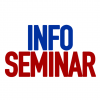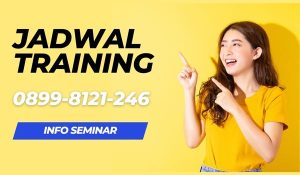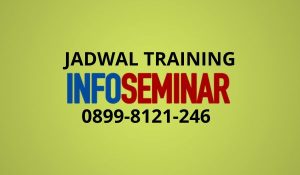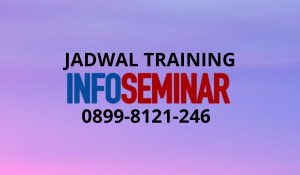Compressor Operation Maintenance & Troubleshooting (YOGYAKARTA)
TRAINING TIME :
- 27 Jul 2015-30 Jul 2015
- 03 Aug 2015-06 Aug 2015
- 08 Sep 2015-11 Sep 2015
- 19 Oct 2015-22 Oct 2015
- 17 Nov 2015-20 Nov 2015
- 30 Nov 2015-03 Dec 2015
VENUE : Yogyakarta (Jogjakarta plaza hotel/Ibis hotel yogyakarta/Ibis Styles yogyakarta hotel/Mutiara hotel/ Melia Purosani hotel)
TRAINING DURATION : 4 days
INTRODUCTION:
Production continuity is a keyword in any process of production activities, in which power system play important role to keep all of the operation.
Compressor is known for its capability to store energy in the form of air pressure. In industrial application, compressors are completed with auxiliaries to control the air flow, pressure, and actuators. Compressors will become advantage if it’s operated and maintained properly. Compressors principles and their system performance however should be understood by operator and any person who get involved with them to increase performance of the operation, maintenance, safety, etc.
TRAINING OUTCOME:
In this training, compressors will be discussed from its principle, application, components and its maintenance. Moreover, their control system to improve performance and safety will also be introduced. After completion of this training participant will understand about the basic principle, application and control system that will help them for improving safety and problem solving on operation and maintenance activities.
TRAINING MATERIAL OUTLINE:
1. FUNDAMENTALS:
a. Explain the theory of air/gas compression.
b. Describe how altitude and moisture affects the compression of air.
c. Describe the principles of operation of positive displacement and dynamic compressors.
d. Define air compression terminology such as absolute and gauge pressures, compressor
e. Displacement and compressor capacity, free air, volumetric efficiency, single and double acting, single and multistage.
f. Given relative data, perform basic calculations to solve for compressor displacement and compressor volumetric efficiency.
2. RECIPROCATING COMPRESSORS:
a. State and describe the different types of single and multi-stage reciprocating compressors, state the function of the various compressor parts, including valves.
b. Describe the methods employed to cool air or gas during compression.
c. List and describe the different types of prime movers used for compressors.
3. ROTARY COMPRESSORS:
Describe the principles of operation, their application, volume and pressure capabilities, methods of regulation, advantages and disadvantages of the following types of (positive displacement) rotary compressors:
a. sliding vane
b. the lobe type
c. roots type
d. screw
e. liquid-sealed
4. CENTRIFUGAL AND AXIAL COMPRESSORS:
a. Describe the design and operation of the volute and diffuser type centrifugal compressors.
b. Describe the design and operation of the single-stage double-flow and the four-stage centrifugal compressors.
c. Describe the design and operation of an axial flow compressor.
d. State the causes and remedies of compressor surging.
5. COMPRESSOR SYSTEM AUXILIARIES:
a. Describe the design and operation of intercoolers and aftercoolers; state their location within the system, describe the maintenance requirements of these components.
b. State the need for air receivers, their preferred location, and the inspection and maintenance requirements as per Code.
c. Describe the use of air filters, list and provide a description of the different types commonly used.
6. OPERATION, CONTROL AND MAINTENANCE:
a. Explain the following methods employed to control compressor output:
? Start/stop, dual control
? Variable-speed
? Suction line valve
? Suction or discharge valve
? Adjustable stroke
? Variable clearance volume
b. List and describe the operation of the various types of controllers and safety devices used in a compressed air system. Describe how these devices can be tested while system is in operation.
c. Describe the internal and external methods of compressor lubrication.
d. State the various operational checks done by an operator on both the compressor(s) and the compressed air/gas system to ensure safe and efficient operation.
e. State the preventive maintenance requirements of compressors, auxiliaries, piping and receivers.
f. State the probable causes of compressed air/gas compressor, receiver or pipeline explosions.
7. ACT, REGULATIONS AND CODES:
The candidate is expected to be able to locate information relating to the staffing, operation, maintenance, inspection, and testing of the compressor plant and its equipments.
8. SAFETY:
The candidate is expected to be able to fully explain the dangers associated with the operation of a compressor plant and all its components, and state the precautions to be taken to minimize or prevent such dangers.
WHO SHOULD ATTEND THIS TRAINING?:
The training can be important for all personnel involved with the design, installation, maintenance, operation and servicing of compressor and their basic systems.
INSTRUCTOR : Dr.Ir. Paryana Puspaputra, M.Eng., and Team
INVESTATION PRICE/PERSON :
1. Rp 7.950.000/person (full fare) or
2. Rp 7.750.000/person (early bird, payment 1 week before training) or
3. Rp 7.500.000/person (if there are 3 or more participants from the same company)
FACILITIES FOR PARTICIPANTS:
1. Training Module
2. Flash Disk contains training material
3. Certificate
4. Stationeries: NoteBook and Ballpoint
5. T-Shirt
6. Backpack
7. Training Photo
8. Training room with Full AC facilities and multimedia
9. Lunch and twice coffeebreak every day of training
10. Qualified Instructor
11. Transportation for participants from hotel of participants to/from hotel of training – VV (if minimal participants is 4 persons from the same company)
TRAINING INSTRUCTOR
Paryana Puspaputra was born in Kotabumi on January 19, 1964, is a Lecturer at the Department of Mechanical Engineering, Faculty of Industrial Technology, Indonesia Islamic University – Indonesia. Undergraduate from Department of Mechanical Engineering, Bandung Institute of Technology, Indonesia (ITB) in 1990 and master degree in Mechanical Engineering Department of Nagaoka University of Technology, Japan in 1996. He achieved his doctorate degree in Department of Mechanical Engineering, Bandung Institute of Technology, Indonesia (ITB) in 2012. He is also experienced as consultant and training instructure for several manufacturing and oil company, such as Chevron, Total, KPA, Petrokimia, Semen, Indonesia Power, etc. His background in mechanical equipment and machinery is completed with knowledge in instrumentation technology which was started from his final project in undergraduate by making software and data acquisition for predictive maintenance, and continued with his graduate thesis in control system for nano technology. There are researches and industrial implementation in data acquisition such as building the DNC system for production-shop using CNC machine, developing the balancing machine for Panasia Indosyntex – Bandung, SCADA system Development based on Fuji Electric control system (for IPAL – Pertamina – Cilacap, Toxic Gas Monitoring – Dieng – Central Java, etc). Moreover, he is also an official trainer of softwares for design and manufacturing base on CAD/CAM Technology (AutoCAD, Inventor, and Delcam PowerShape, ArtCAM) and familier with some finite element based analysys softwares such as Moldflow, ANSYS, SAP, CAESAR II, etc.








